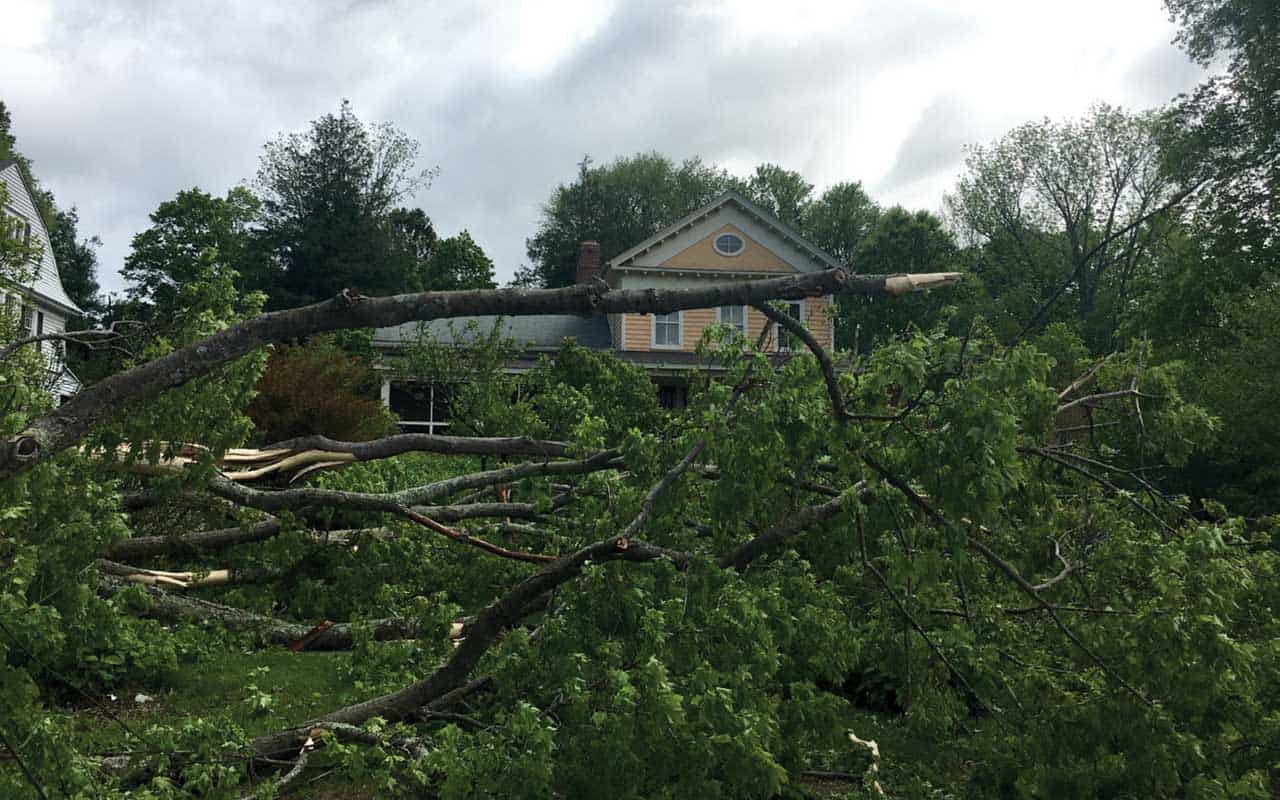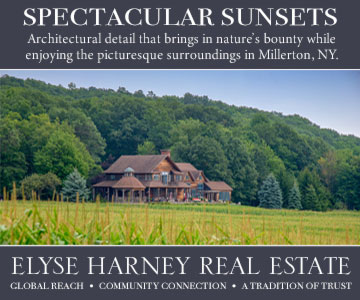Real Estate

Money does grow on trees
For every month’s real estate feature I try to find a topic that I want to learn more about whether it’s flood maps, taxes, or real estate markets. This month’s inspiration came from my experience as a real estate agent when a buyer was advised to have a 100-year-old maple tree removed before buying a house. In my research on trees and landscaping, I was amazed to see how much value trees can potentially add to a house in every way. And also the problems and expense they can create.
The United States is home to about 250 billion trees. Despite increases in our country’s population, parking lots, roads, and sprawl there are more trees standing today than a 100 years ago. Trees cover 34% of our country – 8% of all forest area in the world. But what about that tree in your yard? Some academic studies have shown that a handsome tree can increase the value of your property by 7%, 10%, or even 25% while a diseased tree or ones too close to your house can decrease marketability. According to HGTV, studies have shown that homeowners get a 100% or more return on their money when they invest in landscaping, particularly in trees, with shorter time on the market. That’s much better than the negative return on a kitchen update or a bathroom redo. A recent University of Michigan study estimated that for every $1 invested in a tree you’ll see a 109% return and, if it’s part of a beautiful well-kempt landscape, a tree can increase sales price by even more.
But what kind of tree?
Trees with leaves and flowers are always a yes, and trees with pointy, sharp branches, trees that smell bad, attract unwanted insects like box elders, and trees that aggravate allergies are not a good idea. Northern red oaks, native dogwoods, and sugar maples are often recommended for our region. Remember to consider how big the tree will become before you plant. And think about their mature root system. Slow growing trees typically have deeper roots, stronger branches, and are less likely to fall on your house in extreme weather compared to trees like white eastern pine trees, which are shallow rooted and can get top heavy. Visit local nurseries to see what trees will thrive in your location considering sun, soil, moisture, and climate zone. Consult books like Doug Tallamy’s books Bringing Nature Home, which list native trees for different regions and conditions. Visit botanical gardens and local private gardens open through the Garden Conservancy for ideas and conversations with experts. This is a long-term investment.
Knowing that landscaping overall increases a home’s curb appeal, some informed real estate brokers urge their clients to provide an inventory of plants and trees on the property. In the case of large trees that seem like they might pose a threat to the home, a licensed arborist can do an assessment attesting to the tree’s health or recommending removal. And if you’re contemplating selling your house, take photographs when your landscape is at its most magnificent.
How much does a tree cost?
Young trees are not expensive. A young maple or tulip tree that might be 8 to 10 feet tall, which comes in a 7-gallon or 10 gallon container, will cost around $100 to $200. This size tree is easy to transport and small enough to plant yourself. As soon as the ground is soft enough to dig a hole this spring, you can plant a tree. Trees quickly become more expensive as they get larger and also require professional installation, which typically doubles the cost.
Trees multi-task
Properly selected and placed, trees can improve energy efficiency, add privacy, filter the air, deaden sound, and even lower crime. Mature trees can offer immediate energy saving benefits to homeowners. A deciduous mature shade tree can block up to 90% of solar radiation and reduce air-conditioning needs by 75%. These trees are best planted on the south side of a building where the sun’s rays are most intense. During the winter months, a leafless deciduous tree will permit passive solar heating. Planting evergreen trees to the north and north-west of your house can provide insulation and protection from wind during winter months.
Trees also absorb pollutants, and intercept particulate matter, like dust ash and smoke. If you would like to calculate the energy cost savings of that big tree in your yard go to the National Tree Benefit Calculator online and plug in the species and size of your tree and your zip code. The silver maple in my yard is estimated to provide $270 in savings every year, intercept 7,000 gallons of storm water, conserve 234-kilowatt hours, and reduce atmospheric carbon by 1,107pounds in a year.
Trees and hedges also create privacy from the road and can effectively dampen sound if planted densely in three rows. The sound barrier needs to be about 20’ wide and ideally on a raised berm. Begin with a dense row of shrubs with a taller hedge in the center and another planting of showy shrubs facing your house. Hollies and junipers are excellent choices.
Where to plant?
Trees that will grow over 30 feet tall should be planted 25 feet or more from overhead wires with at least 15 feet between each tree. Allow a minimum of 15 feet from your house and three feet from the street or sidewalk. Remember that trees planted in the ROW (road right-of-way), usually 10 feet on either side of the street, are the property of the municipality. A big tree growing too close to a house can create a problem at time of sale and buyers often insist on their removal because of the danger they may pose. Removing a large tree in an inaccessible location can involve a crane and as much as $10,000 of expense.
Trees require maintenance
Like everything else on your property, trees require more attention than just raking up the leaves. If there’s a dry spell most trees appreciate a good soaking from the hose. Dead wood should be removed and trees should be trimmed. Fertilizing trees at the drip edge in the spring is helpful to their growth and health. The US Department of Agriculture publishes the free Tree Owner’s Manual with everything you need to know – including don’t trim a tree yourself if you can’t reach the branches without a ladder. Homeowners may want to hire an arborist to check on the health of their trees every couple of years.
Negotiating tree treaties
Trees and large woody shrubs can also be the source of dispute and, occasionally, open hostilities between neighbors. The sycamore tree on the property next door is dropping branches, spiky seed balls, and gigantic leaves all over your yard. A huge pine branch is overhanging your garage.
What can you do? First start with a survey to determine whose property the tree trunk is on if that’s not obvious. Next contact a licensed, insured arborist who knows the regulations in your town and can provide a work specification on how exactly the tree will be cut back. In most places you can prune the parts of a tree overhanging your yard as long as the work does not damage the tree’s health. Next, and most importantly, talk to your neighbor, and try to get their written consent, and, if necessary, permission to access the tree through their property. Or perhaps offer to pay to have the tree removed. Remember that outraged neighbors with a valuable, mature tree can legally seek monetary damages if this is handled incorrectly and the tree dies.
Homeowners insurance protects your property against falling trees
From an insurance point of view, trees are a potential menace, but they don’t increase your premium. Kirk Kneller of Kneller Insurance explained that if a tree on your property falls on your house, your standard homeowner’s insurance would pay for the damage. If the tree doesn’t damage anything and merely falls in your yard, you will have to cut it up and take it away yourself. If a neighbor’s dead tree damages your property then the neighbor’s liability policy will reimburse you for damage; however, if it’s your neighbor’s live tree, which falls over for whatever reason, your own homeowner’s insurance will pay because it is really an act of God.
When you buy a new home think about planting a tree to mark the occasion. During your years of ownership you’ll watch it grow along with your children and grandchildren. A tree can become a family legacy and a valuable addition when it’s time to sell. Remember the saying; the best time to plant a tree is 50 years ago. •
Christine Bates is a real estate agent registered in New York and Connecticut with William Pitt Sotheby’s International. She has been writing about all things real estate since the first issue of Main Street Magazine in 2013.






